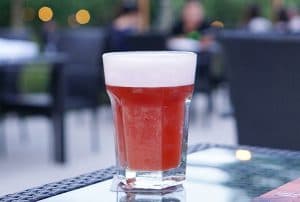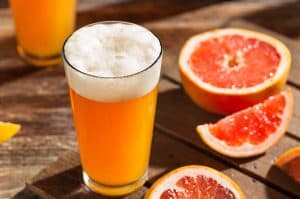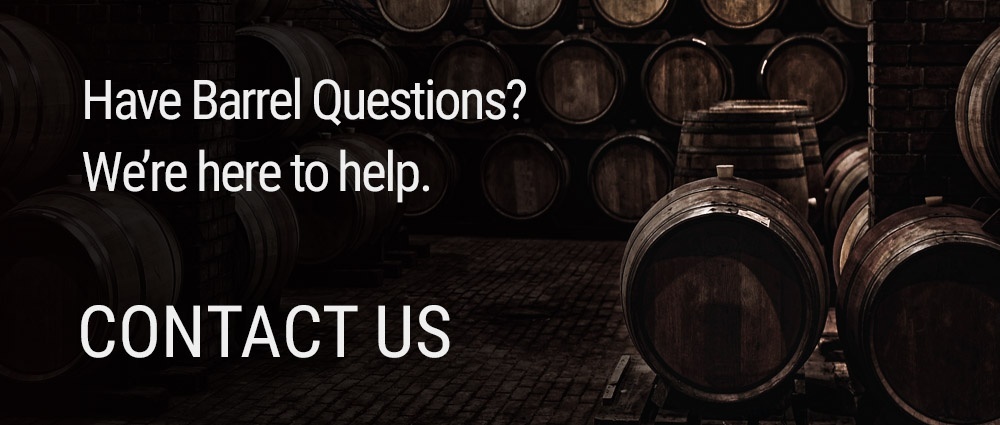Since sour beers first originated, almost accidentally, in the valleys of Belgium, American craft breweries have been fascinated with trying to replicate these traditional pucker ales with modern methods. In turn, sour beer popularity has exploded. With it being easier than ever for sours to be pushed to the masses, the beer has transformed with styles and techniques for creation. Two of these styles stand above most others; Barrel-aged sours and Kettle sours.
Barrel vs. Kettle Soured
 One of the biggest differences between barrel and kettle sours is the brewing process and the time it takes to complete. Barrel-aged sours use the more traditional method of mixed fermentation, which means that beer is fermented as normal until it’s at or near completion, and then moved into the wooden barrel where wild yeast and bacteria re-ferment the brew. This entire process can take anywhere from several months to three or four years, and the barrel-aged sour will even keep transforming in taste after it’s been bottled. Because of the time and process it takes to produce barrel-aged sours, you’ll most often see them priced higher than a kettle sour. Barrel-aging is used on most of the traditional sours, such as Lambics and Flanders Reds.
One of the biggest differences between barrel and kettle sours is the brewing process and the time it takes to complete. Barrel-aged sours use the more traditional method of mixed fermentation, which means that beer is fermented as normal until it’s at or near completion, and then moved into the wooden barrel where wild yeast and bacteria re-ferment the brew. This entire process can take anywhere from several months to three or four years, and the barrel-aged sour will even keep transforming in taste after it’s been bottled. Because of the time and process it takes to produce barrel-aged sours, you’ll most often see them priced higher than a kettle sour. Barrel-aging is used on most of the traditional sours, such as Lambics and Flanders Reds.
On the contrary, a kettle-soured beer can be completed in a matter of 3-4 weeks, mainly because it uses the same brewing process as most other beers. In kettle sours, yeast or bacteria is added directly to the wort to sour the beer, instead of being soured and re-fermented in the barrel. The wort is then kept at a warm temperature, varying from 110-120 degrees Fahrenheit, for 24-48 hours to reach the desired pH level, and then the wort is boiled and hopped as normal. While the brewing process for kettle sours is much quicker, the taste reflects that. Kettle sours are much less complex than barrel-aged sours and have a one-note palate when compared to the layers of flavors found in barrel-aged sours. You’ll often see kettle souring used on beers such as Goses and Berliner Weisses, both of which are skyrocketing in popularity with the boom of kettle souring.
Bacteria and Yeast
When it comes to brewing sour beers, whether it’s barrel-aged or kettle-soured, there’s a “big 3” of bacteria and yeast you’ll find in most sour styles.
- Brettanomyces: Commonly referred to as “brett”, this strain of yeast is responsible for fermenting sour beers. While not technically giving the beer the sour taste itself, it makes sours palatable.
- Lactobacillus: Lactobacillus is the most prominent bacteria used in souring beers. Lactobacillus can come from a lab or even from yogurt at your local grocery store, which some brewers experiment with. In kettle-soured beers, lactobacillus is added straight to the wort to sour it. The lactobacillus converts sugars to lactic acid, giving the beer a clean, sour taste.
- Pediococcus: Pediococcus is another strain of bacteria responsible for souring beers, but where Lactobacillus has a clean sour taste, Pediococcus provides the opposite. Pediococcus lends a harsher, more unpredictable sour taste and is commonly used in beers like Lambics and Flanders Reds.
Wild Ales and Spontaneous Fermentation
 Where some styles of barrel-aged sours and kettle-soured beers have much more rigid guidelines, wild ales are quite the opposite. Wild ales harken back to the days when Lambics and sours weren’t created purposely, but from the environment around them. Beer would go through a process called “spontaneous fermentation”, where they were exposed to the air around them, and more importantly the bacteria and microbes floating through that air. Beers would ferment from a variety of yeast strains found in the air, rather than a yeast cultivated in a lab like most beers today. Many craft breweries have begun experimenting with spontaneous fermentation, and you can even see it in our home state of Maine. Allagash Brewing Company has a whole line of spontaneously fermented beers; the Coolship series, named after the traditional vessel that holds and cools the wort overnight using the outside air. After cooling, the beers are then transferred into French oak wine barrels where the fermentation process begins.
Where some styles of barrel-aged sours and kettle-soured beers have much more rigid guidelines, wild ales are quite the opposite. Wild ales harken back to the days when Lambics and sours weren’t created purposely, but from the environment around them. Beer would go through a process called “spontaneous fermentation”, where they were exposed to the air around them, and more importantly the bacteria and microbes floating through that air. Beers would ferment from a variety of yeast strains found in the air, rather than a yeast cultivated in a lab like most beers today. Many craft breweries have begun experimenting with spontaneous fermentation, and you can even see it in our home state of Maine. Allagash Brewing Company has a whole line of spontaneously fermented beers; the Coolship series, named after the traditional vessel that holds and cools the wort overnight using the outside air. After cooling, the beers are then transferred into French oak wine barrels where the fermentation process begins.
Whether you’re looking for a barrel to age your sour beer in or just want to learn more about the brewing process, we’re here to help! Contact us today with any of your barrel questions or to order a barrel!


